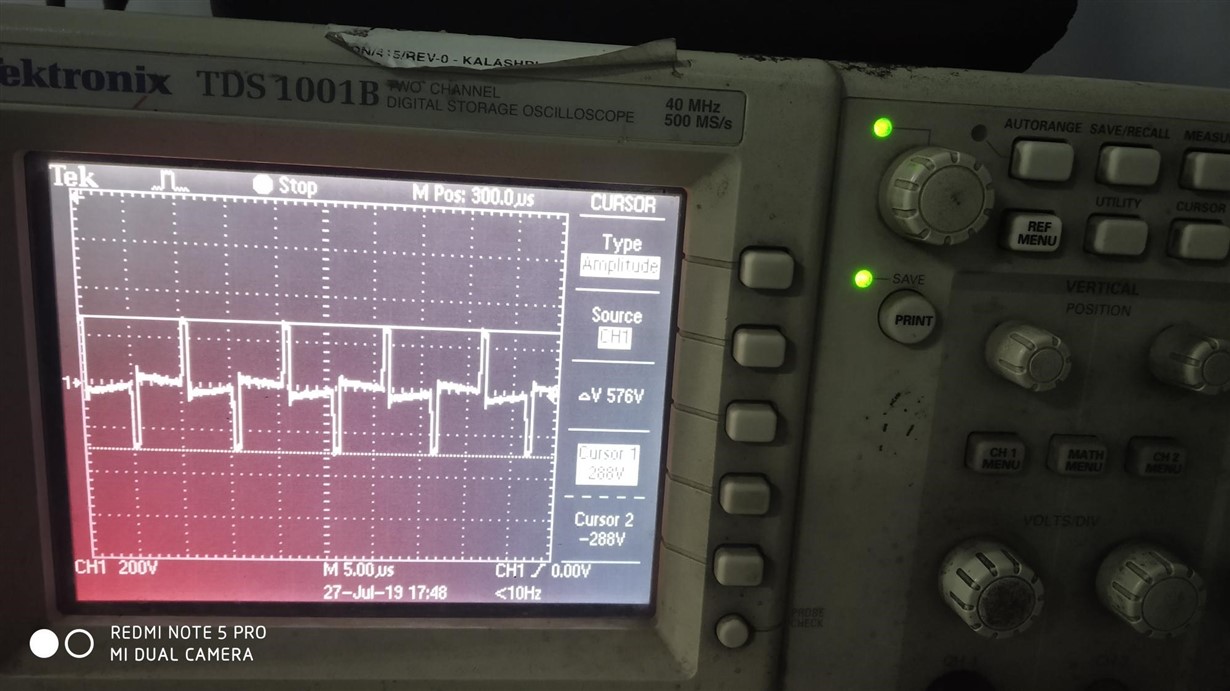Dear Roberto,
At the time of testing I am bypassing Q12-Q31 MOsfet bank by putting wire link from C53 to J8 +, I have connected dcdc card to simple rectifier card and giving 12V to VCC_FB on J5 connector from external power supply. Now in this case I get stable 54V output when I gave 190VAC from variac. but my external power supply get loaded and input current I got from ext. power supply is around 1 A.
Also the waveform of T4 primary winding are like attached snapshot. are they ok ?






